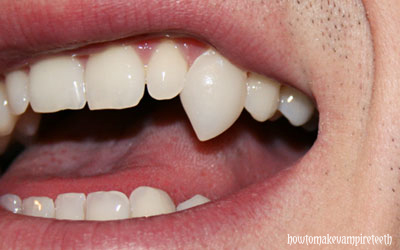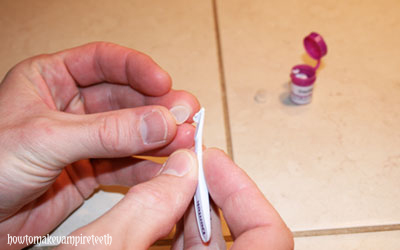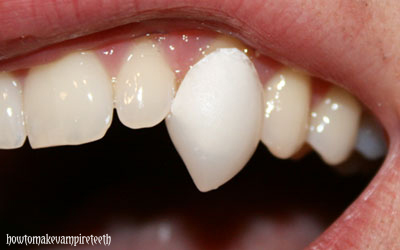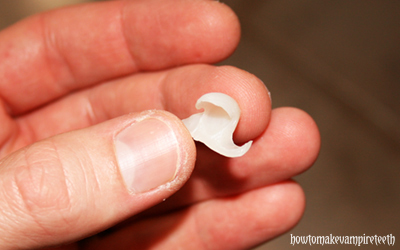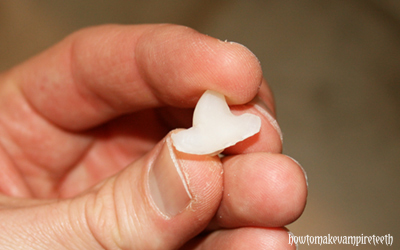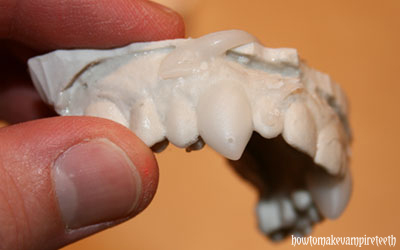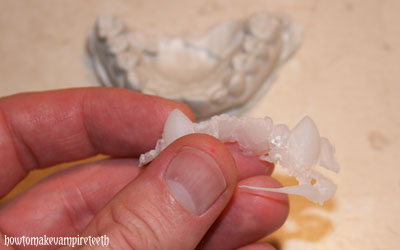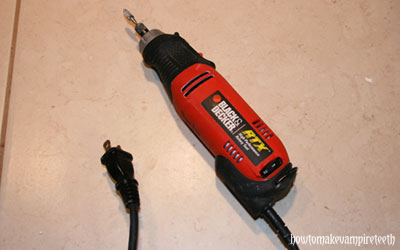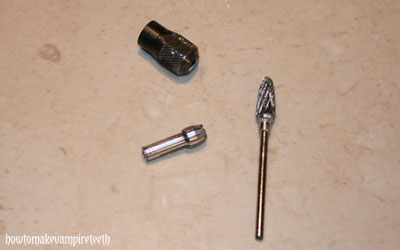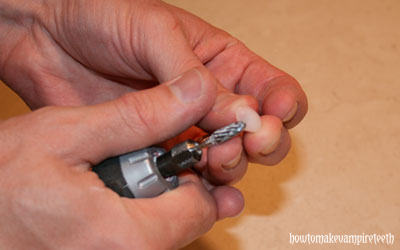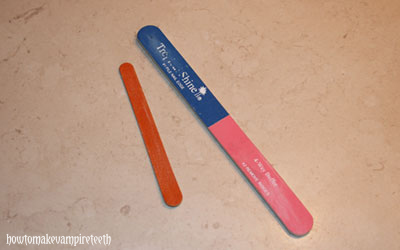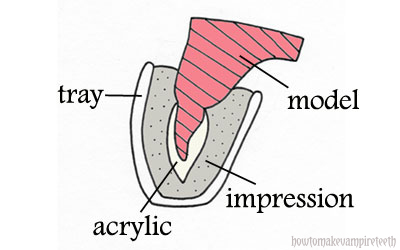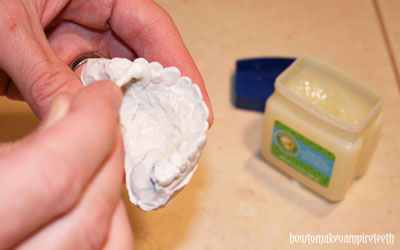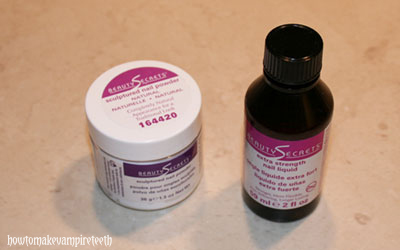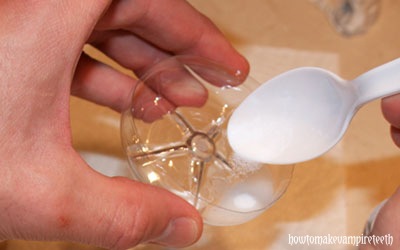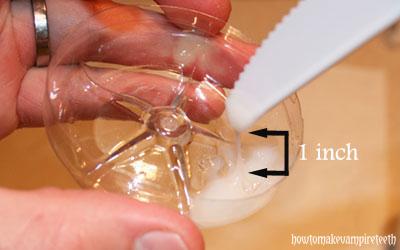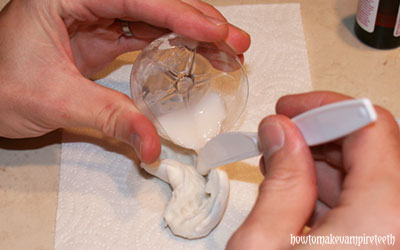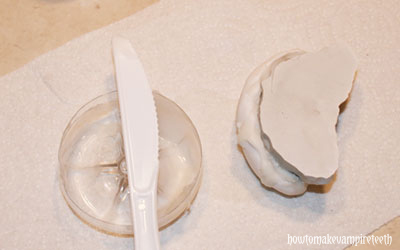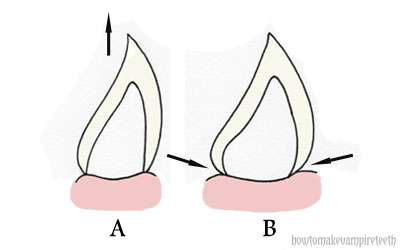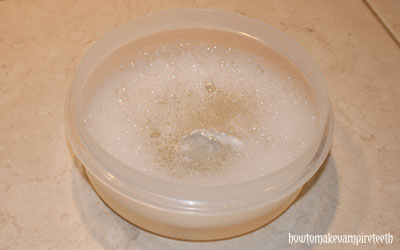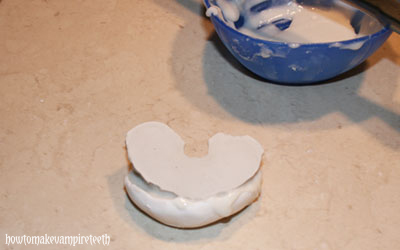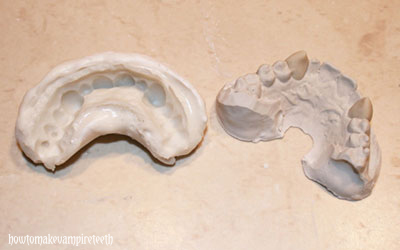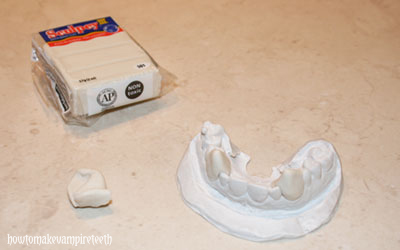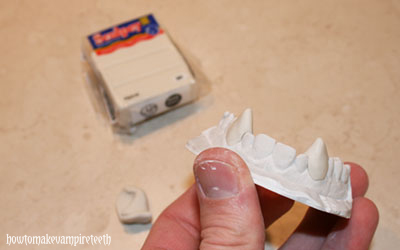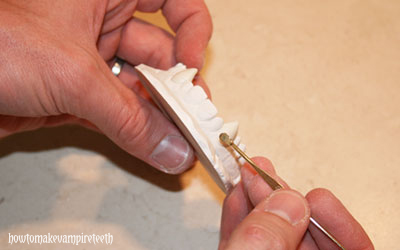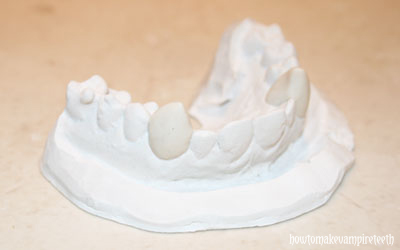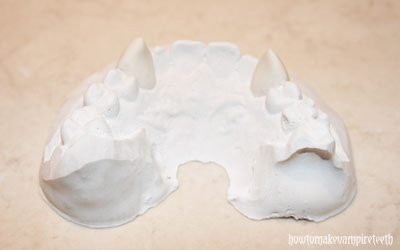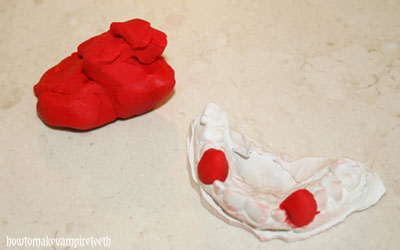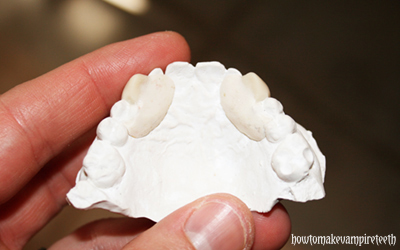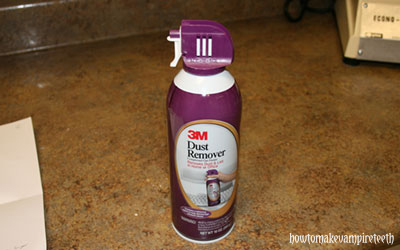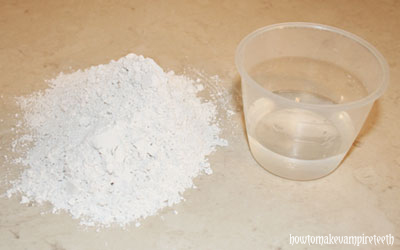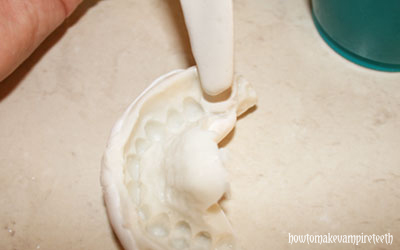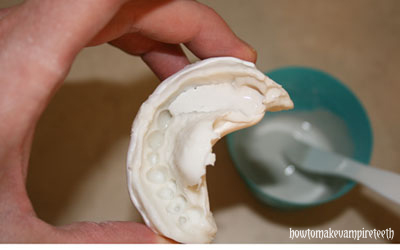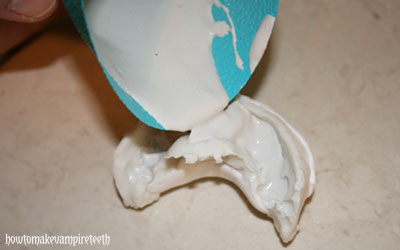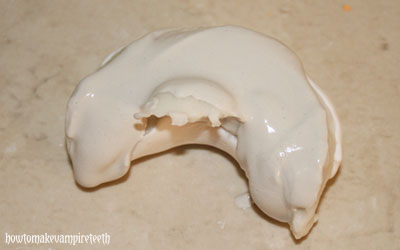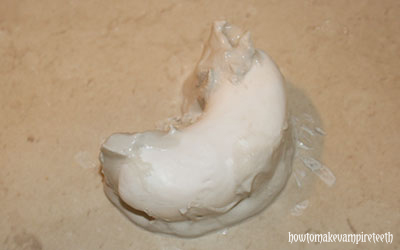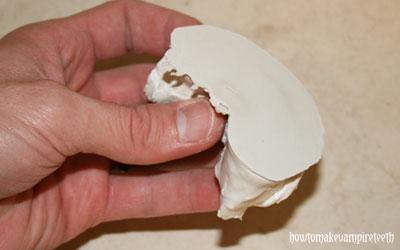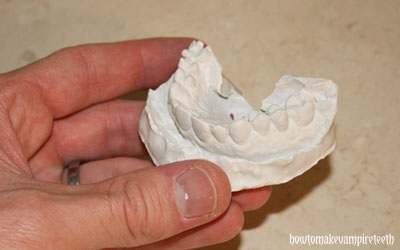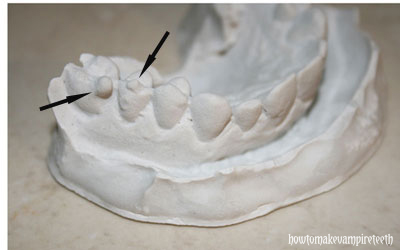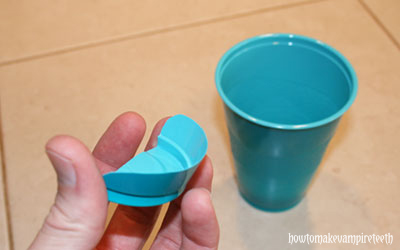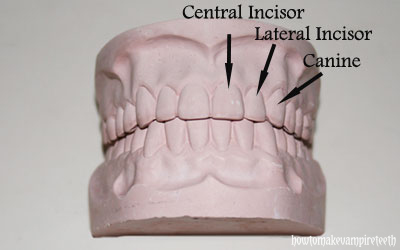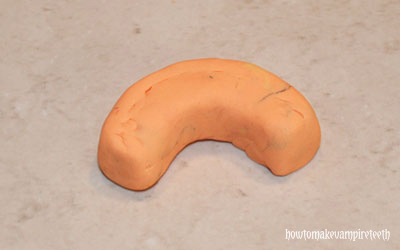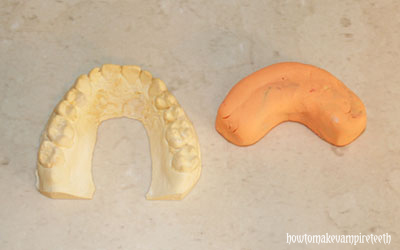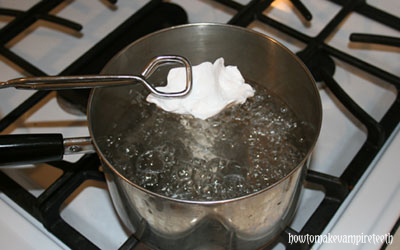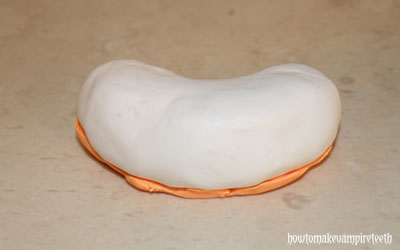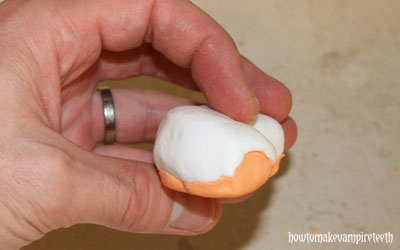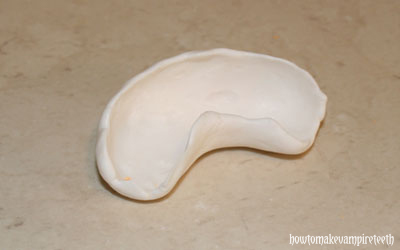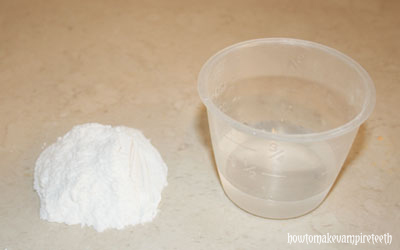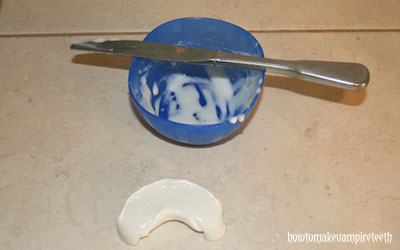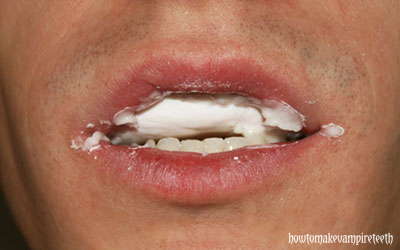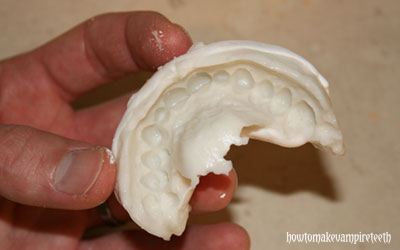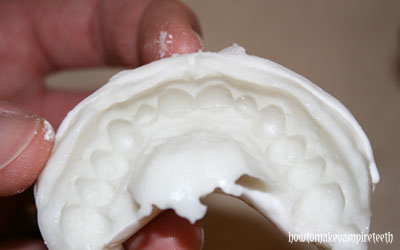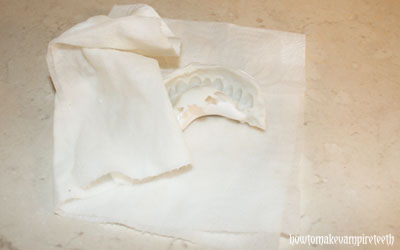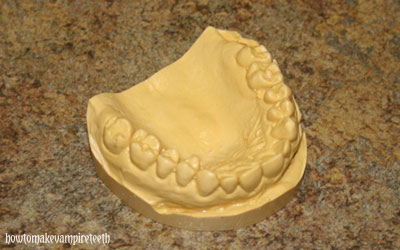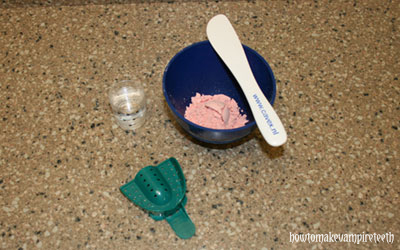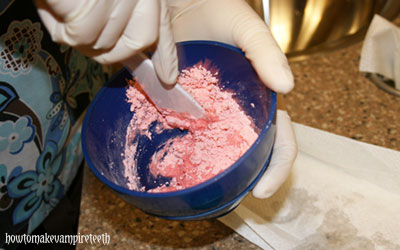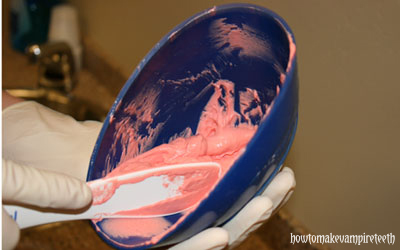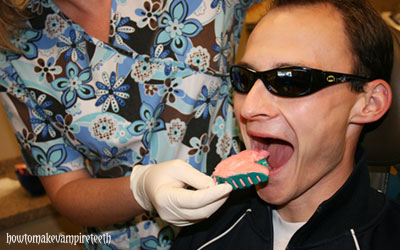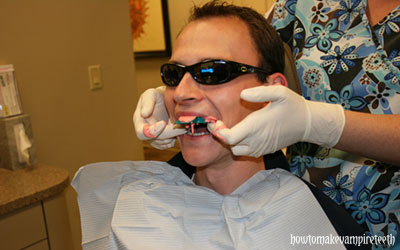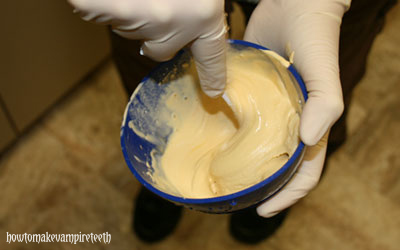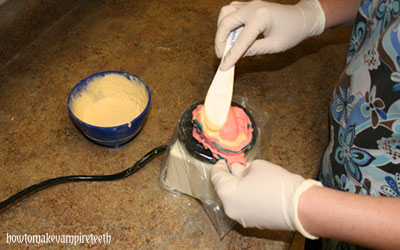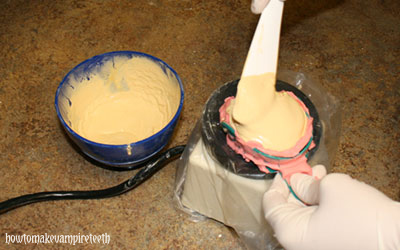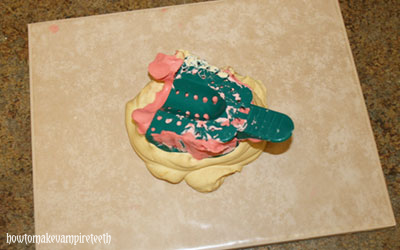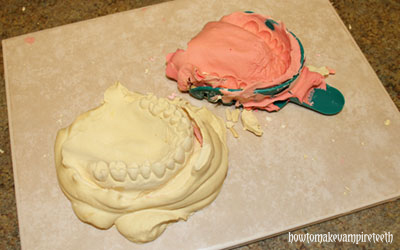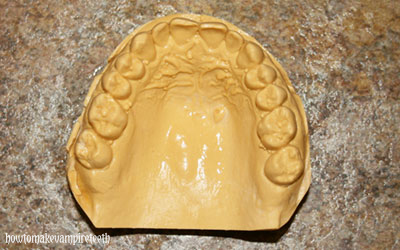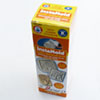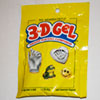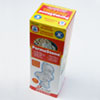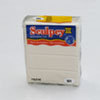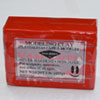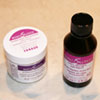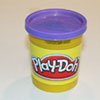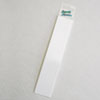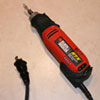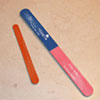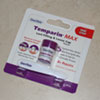Proper Use of Your New Vampire Fangs
When you put the fangs on they’ll likely stay on quite well while making normal movements with your mouth like smiling and talking. If you find that they don’t stay on very well at all, examine the fit. If you goofed up anywhere along the way (distorted impression, defects in model, distorted acrylic, etc.), that may be your problem.  Refer to our Troubleshooting page for more tips.
If the teeth fit pretty well, but just don’t stay on as well as you’d like, it might be that your teeth have a shape that is not too favorable. If this is the case, you can try some type of fixative. Try putting toothpaste in the fang and see if it helps. You could also try some temporary dental cement. Both these items can be found in the dental or pharmacy section of most stores.
In the above picture we’ve used temporary dental cement to fix our fangs in place. Â You’ll notice that the cement gave the teeth a white, opaque appearance and that it’s not seating completely. Â To prevent this, only put the cement on the back side of the tooth and keep it pretty minimal.
If you decided to add a little bulk to the back side of those teeth they should now look like the above pictures. Â This is our preferred way to ensure a great fit. Â If you didn’t add this material a few steps back (step 3) you can still do it now. Â Acrylic is actually very good at bonding to itself. Â Put some vaseline all over the teeth neighboring your fangs on your model, stick your fangs back on it, mix up some new acrylic, and add it to the back side of your fangs and the teeth next to them. Â After it has set up, remove the fangs, check that the new material is firmly attached to the old material, and polish things up.
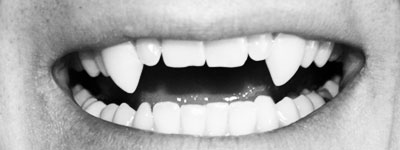
When you’re all done, stick your fangs on, find a friend or small child to scare, and give them your best vampire hiss. You’ve successfully created your custom set of vampire teeth! Keep your models for future use. You’ll be able to replace your fangs more easily when needed or you can make a new variation of fangs.

READ THE FOLLOWING PARAGRAPH! Â THIS IS VERY IMPORTANT!
No matter how well your teeth stay on, show some caution while wearing them. For example, if someone tells a joke at your next vampire convention, it wouldn’t be wise to laugh out loud with your head thrown back. A fang could easily slip right down your trachea and an emergency department is going to have a difficult time locating an acrylic fang deep in your lungs. Do not eat with your fangs, do not sleep with your fangs, etc. Do not wear your fangs for extended periods of time either. Your bite is going to be slightly out of place with these fangs on and it may begin to irritate your teeth and cause some sensitivity or aching. Also, if you wear your teeth for multiple hours per day for extended lengths of time you may begin to see movement or drifting of your teeth! Most of all, withstand the temptation to bite the neck of a member of the opposite sex. These teeth are very strong and can easily puncture skin if you’ve sharpened them. We hate to break it to you, but vampires are still considered a myth! No matter how cool you feel wearing these puppies, you will not acquire any vampire abilities by wearing them!!
